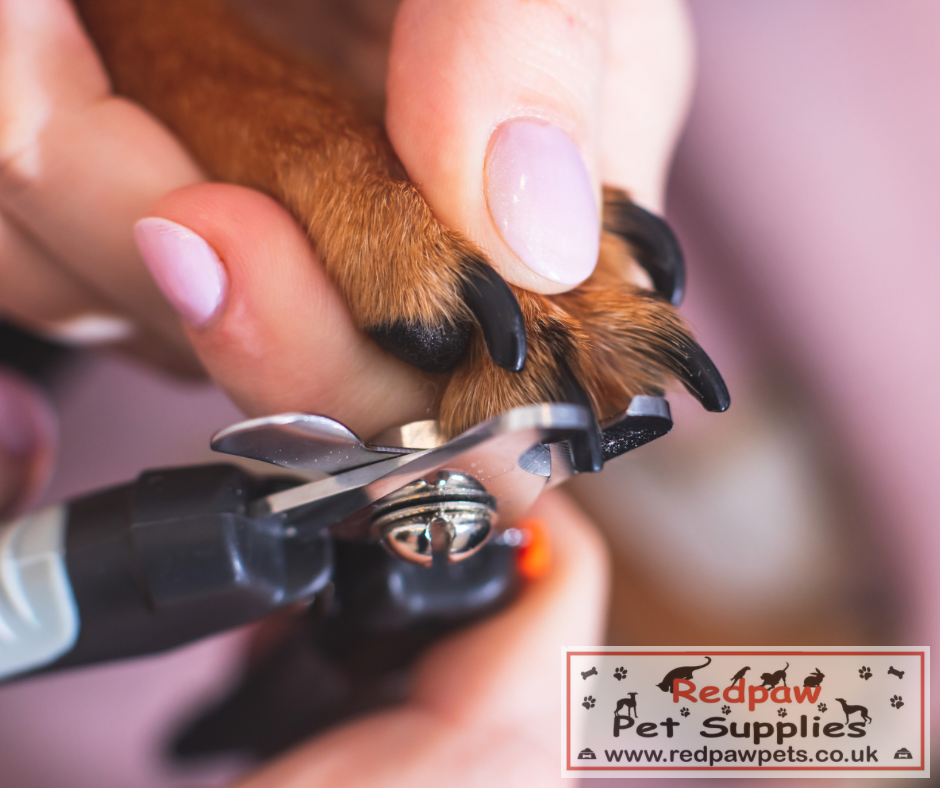Tips to help keep your dogs nails trimmed and tidy

Reasons to keep your dog’s nails trimmed:
1. Prevent discomfort and pain: Overgrown nails can curl and grow into the paw pad, causing pain and discomfort with each step your dog takes.
2. Avoid mobility issues: Long nails can alter your dog’s gait and balance, potentially leading to joint and posture problems.
3. Reduce the risk of injury: Overgrown nails are more prone to breaking, splitting, or snagging on surfaces, which can cause bleeding or infection.
4. Promote better paw health: Trimming your dog’s nails regularly can help maintain proper foot structure and prevent the development of complications like ingrown nails.
5. Enhance traction and stability: Properly trimmed nails allow your dog to grip and maintain better traction on various surfaces, reducing the risk of slipping or sliding.
Remember, it’s essential to have patience and make the nail trimming experience positive for your dog. If you’re uncertain or uncomfortable doing it yourself, consult a professional groomer or your veterinarian for assistance.
How to trim your dog’s nails in the smartest way:
Step 1: Gather the necessary materials
– Dog nail clippers or a dog nail grinder (choose one depending on your preference and your dog’s comfort)
– Styptic powder or cornstarch (to stop bleeding if nails are accidentally cut too short)
– Treats or rewards (to provide positive reinforcement and keep your dog motivated)
Step 2: Choose the right location
– Find a quiet and well-lit area in your home where you and your dog can comfortably sit or stand during the nail trimming process.
– Place a non-slip mat or towel on the floor for your dog’s stability.
Step 3: Get your dog used to nail handling
– Before attempting to trim your dog’s nails, it’s important to get them comfortable with the process.
– Start by gently handling their paws and touching their nails without actually trimming them.
– Gradually increase the duration and pressure of your touch over time.
– Reward your dog with treats and positive reinforcement throughout this training process.
Step 4: Decide on the trim length
– Observe your dog’s nails and determine the appropriate length to trim.
– Avoid cutting too close to the quick (the live part of the nail), as it may cause bleeding and discomfort for your dog.
– Trim small amounts at a time until you reach the desired length.
Step 5: Start trimming the nails
– Hold your dog’s paw securely but gently.
– If using nail clippers, position the blades perpendicular to the nail, avoiding the quick. Make a single, swift cut.
– If using a nail grinder, turn it on and touch it to the nail gradually, working your way around the entire tip to avoid heat build-up.
– Be sure to provide breaks during the process to prevent overheating or stressing your dog.
Step 6: Monitor for signs of distress or discomfort
– Watch for any signs of distress, such as excessive panting, yelping, or pulling away.
– If your dog becomes too stressed, take a break and try again later or another day.
Related Articles

Discover the benefits of Redpaw Peptide+
Discover the Benefits of Redpaw Peptide+ Dog Foods: Cooked with Revolutionary Freshtrusion HDP Technology Why Choose Redpaw Peptide+ Dog Foods? Redpaw Peptide+ Dog Food is

Caring for Your Senior Canine Companion
Caring for Your Senior Canine – Nourishing Their Well-Being Through Nutrition and Enrichment. As our cherished canine companions embark on their golden years, providing them with

Benefits of Keeping a Dog Food Diary
Keeping a dog food diary can be incredibly beneficial for both you and your furry companion. Lets explore some reason why: Nutritional Balance: A food


